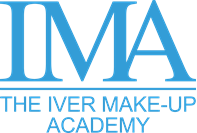CHATTING TO MARY POPPINS' HAIR AND MAKE-UP ARTIST, TAMSIN BARBOSA
Wednesday, January 2, 2019
The Iver Make-up Academy‘s Vice Principal, Tamsin Barbosa, has over 30 years’ experience working in the film and television industry. Throughout her career, Tamsin’s worked on high profile film productions including Star Wars, Pirates of the Caribbean and Nanny McPhee.
Recently Tamsin has been working on one of the most highly anticipated films of the year - Mary Poppins Returns.
Set 30 years after the original, the new film sees Mary Poppins come back to London to help the now-adult Banks children through a difficult time in their lives.
Tamsin was the hair and make-up artist for Emily Blunt who plays Mary Poppins.
We spoke to Tamsin to find out all about the latest Disney blockbuster, and asked what it’s really like to be a hair and make-up artist working in film.


Getting the call
Tamsin has worked with hair and make-up designer, Peter Swords King, many times over the last 20 years. And as Peter was the designer for Mary Poppins Returns, Tamsin was able to work with him again.
“The first film that I worked with Peter on was Little Voice in 1998. Since then he’s asked me to be part of his team for films such as both Nanny McPhee films, Alice through the Looking Glass, Into the Woods, Star Wars and most recently, Mary Poppins Returns.”
“When I was asked to join the team on ‘Mary Poppins Returns’, Peter asked if I would do make-up and hair for Emily Blunt.”
Researching the look
The first thing that goes into any character’s look is research. In film, Tamsin tells us how it’s a team effort.
Tamsin explains: “To begin, the make-up designer and the director of the film will have many discussions about the overall look, or certain characters in the film. At this stage it’s really important for the designer to understand the director’s vision for the film and the characters.”
To research the character she’s working on, Tamsin says: “I will spend hours gathering information for a film. If it’s set in a particular period, I’ll study paintings or photographs to help build my points of reference.”
“When I joined the team for Mary Poppins Returns, Peter had already had many conversations with [Director] Rob Marshall about Mary Poppins look and had already collected lots of references. So, using this as a starting point, Peter and I worked together trying various hairstyles and colours, and different levels of make-up until everyone was happy with her look which you see in the film.”
Drawing inspiration
The time period a film is set in can influence characters’ hair and make-up design. But Mary Poppins was a bit different…
Tamsin tells us: “Her look had to be quirky and eccentric, yet stern and reserved. And although the film is set in 1934, Peter was also given creative freedom within the period. Producer Marc Platt explained to us that Mary Poppins is a character who ‘lives outside of time’.”
“Peter drew inspiration from photographs and paintings from the period, but always with a timeless element. And this perfectly complemented costume designer Sandy Powell’s amazing costume design.”


Image courtesy of Disney © 2018 Disney Enterprises
Putting it all together
In film, the hair and make-up must work well with the character’s costume. And this means the two teams working closely on set. Tamsin explains just how important it was for Mary Poppins Returns:
“Having a good relationship with the costume designer was essential. Peter collaborated very closely with Sandy on Mary Poppin’s look. The silhouette was hugely important, particularly because of her well-known arrival shot in the original film.”
“In both films Mary Poppins wears a hat as one of her main looks – so this meant her hair shape needed to work both with and without the hat.”
Practically perfect
Mary Poppins is famous for being practically perfect in every way, and that includes her hair and make-up. We asked Tamsin how Mary Poppins Returns is different from the 1964 film.
“It was important that her look was updated. However, elements of her original look, such as the fact she wore a hat, a coat and carried an umbrella were still there. And, of course, it was important to the character that her hair and make-up remained perfect at all times.”
Working in film
With Tamsin’s years of experience working on film and TV sets, she knows a thing or two about what it’s like.
“As a make-up artist your days can be very long, so you need plenty of stamina! Our day often starts between 5 or 6am, which can mean setting your alarm as early as 4am. If you are working in the prosthetics department, it can be much earlier.”
“Once you have made up your actor, you‘ll go onto the film set with them for the day. This is to make sure their hair and make-up stays the same throughout the day’s shooting or to make any changes to it if necessary.”
“At the end of the day’s filming, you need to take your actor’s make-up off and prepare anything you may need for the next day, such as setting wigs, which can take time. It’s not unusual to still be at work at 9 or 10pm.”

Image courtesy of Disney © 2018 Disney Enterprises
It’s a team effort
Most film and TV sets have a make-up department, which can span multiple teams. Tamsin explains how they all work together, and just how many make-up artists it can take to work on a production.
“The size of the make-up team will depend on the film. But on average, a team for a film would consist of a make-up and hair designer, key make-up and hair artist, 2 or 3 make-up artists and then a trainee or junior.”
“On top of this, there is often a crowd hair and make-up supervisor who is responsible for the team that creates the looks for all the supporting artists. On a busy crowd day there could be as many as 70 hair and make-up artists in!”
Expert advice
Finally, we asked Tamsin what it takes to be a successful hair and make-up artist.
“There are definitely some general skills that every make-up artist needs: a very good eye for detail, to be creative and imaginative, the ability to work as part of a team and to get on with everyone.”
“Excellent communication skills and having the ability to work well under pressure are very important too. Plus stamina and punctuality, which are also essential.”
“My advice to aspiring make-up artists is to be nice to everyone! Be prepared to work for free or expenses only at first so that you can build both your contacts and portfolio at the same time. Practice as much as you can and always do your research. And take any opportunities offered to you; there is often an element of luck in being in the right place at the right time.”
If you’re looking to kickstart your career in TV and film and learn from industry-leading experts, take a look at our make-up courses. Or get in touch to hear more!















